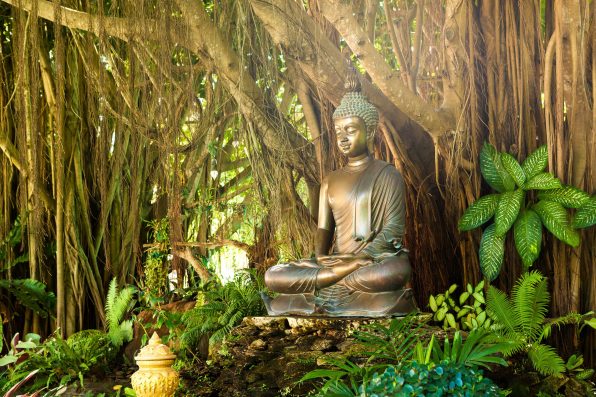In 2015, a C.T. scan revealed the mummified remains of a monk inside a thousand-year-old Buddha statue. Researchers brought the statue from the Drents Museum in the Netherlands to the Meander Medical Center to study its interior.
The gold Buddha statue is originally from China and dates back to the 11th or 12th century. It stands about 1.2 meters tall. Before being loaned to the Drents Museum and displayed in an exhibition featuring 60 human and animal mummies, it was part of a private collection.
The Meander Medical Center is located in the Dutch town of Amersfoort. The hospital specializes in treating senior citizens, but so far, the Buddha statue is its oldest patient ever.
To learn more about the ancient artifact, experts performed a full-body C.T. scan. As the C.T. images were developed, they revealed a significant surprise.
Inside the statue, there was a mummified human body sitting in the lotus position. After further investigation, the researchers discovered that the remains belonged to a Buddhist monk who had gone through self-mummification, a process known as “sokushinbutsu.”
Between the 11th and 19th centuries, Buddhist monks in Japan practiced sokushinbutsu to achieve enlightenment. Some Chinese monks participated in the practice as well. It involved several stages that can take place over the course of many years.
Monks interested in self-mummification would first have to follow a strict diet to slowly starve their bodies and increase their chances of preservation.
They ate nothing but berries, nuts, and seeds to reduce body fat. The diet gradually became even more restrictive. During this phase, monks could only consume tree bark and roots. They also drank a poisonous tea made from the sap of the urushi tree. The tea’s toxicity was meant to kill bacteria that would cause decay and keep insects away.
Next, a monk would be buried alive in an underground tomb with just enough room to stay seated in the lotus position. He would breathe through a small bamboo tube and ring a bell each day to indicate he was still alive.

Sign up for Chip Chick’s newsletter and get stories like this delivered to your inbox.


